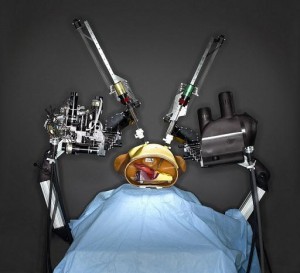Surgical Complications and Two Colleagues

As I have said here before, we have a good number of health care providers as patients. As an example, yesterday I performed a stem cell re-implant on a dentist from Hawaii. The reason I’ve usually given is that these medical providers know the other side of the big surgical procedure coin. They have seen the complications of surgical procedures, treated these patients or been involved in treating the complications. So when it comes time for these medical providers to get a knee replacement or major orthopedic procedure, they go looking for other alternatives. I’d like to highlight two colleagues who have contacted me in the past week who went through with big orthopedic surgeries and lived to tell the tale (one only barely). This is not to say that many times big orthopedic procedures don’t change lives for the better, they do so everyday. However, the bigger and more invasive the procedure, the bigger the chance for significant complications.
The first is a doctor who had a benign tumor on his spine. It definitely needed to be taken out. He scoured our local area for a neurosurgeon who had experience in taking out this particular type of tumor (a tall task). It was an 11 hour surgery where the surgical site became infected. He is now on IV antibiotics, had a second surgery where they were forced to remove the hardware and “power wash” the area. Thank God this wasn’t MRSA, as he likely wouldn’t have lived to tell the tale. This of course led to protracted inactivity, a deep venous thrombosis, which led to a pulmonary embolus, and finally the placement of a filter in one of his major veins (to catch the little blood clots). What started as a simple removal of a benign tumor led to him almost loosing his life to surgical complications. Complications like this are not uncommon in spine surgery, with most studies quoting a 2-5% serious complication rate.
The second story that I’ve heard this past week is another colleague who went in for routine arthroscopic shoulder surgery for rotator cuff repair. The surgeon may have speared one of the major nerves of the shoulder with the scope which has led to atrophy in the surrounding shoulder muscles and adhesive capsulitis in the shoulder. It’s also possible that the traction used to pull on his arm during surgery caused the nerve injury. He now is forced to leave practice as a chiropractor as he has no strength in the arm. How often do serious complication occur in shoulder arthroscopy? Several studies quote about 10%, but reading between the lines, the rate of serious complications is likely lower, about 5%.
Many pundits have written about the possible horrible complications that could befall anybody who tries stem cell therapy. I have written on this topic in the past. To recap, the safest option for treatment at this point is the patent’s own adult stem cells, as they are used everyday by the body to repair and maintain many tissues. However, the surgical complications of the procedures that stem cell therapy would replace make any possible complications from the patent’s own adult stem cells look mild. This is ultimately why we see so many health care providers, they simply weigh both of these things and opt for the much less invasive stem cell treatment.

If you have questions or comments about this blog post, please email us at [email protected]
NOTE: This blog post provides general information to help the reader better understand regenerative medicine, musculoskeletal health, and related subjects. All content provided in this blog, website, or any linked materials, including text, graphics, images, patient profiles, outcomes, and information, are not intended and should not be considered or used as a substitute for medical advice, diagnosis, or treatment. Please always consult with a professional and certified healthcare provider to discuss if a treatment is right for you.